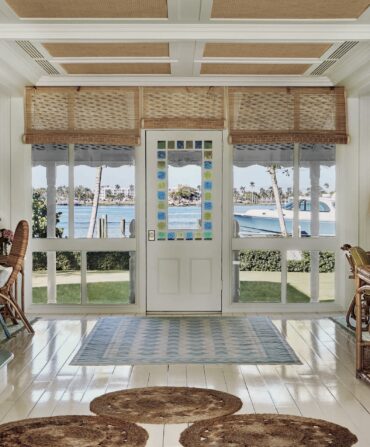Homeplace
Inside a Rare Cumberland Island Dwelling
Gogo Ferguson’s home is a wild heart—and one that showcases the wonders of its setting
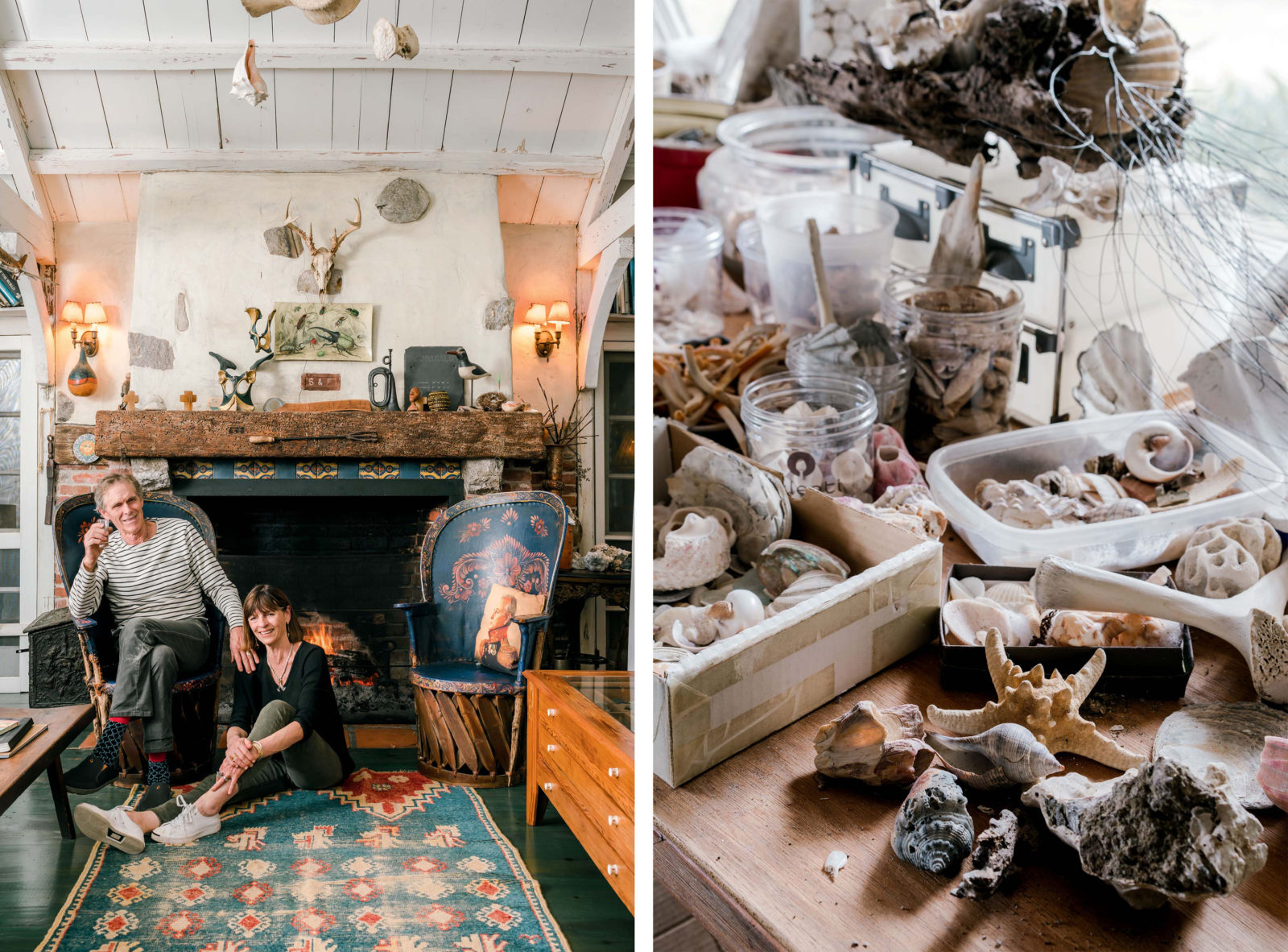
Photo: Ali Harper
David Sayre and Gogo Ferguson in the living room of the home they built on Cumberland Island, Georgia; Ferguson’s studio.
After the ferry ride from Fernandina Beach, Florida, and landfall on Cumberland Island, Georgia, and down the dirt road past the stately Greyfield Inn and beneath the live oaks and alongside the feral pony chomping on grass, the house rises from sand.
The home the jewelry designer Gogo Ferguson built three decades ago with her husband, David Sayre, rambles, wood and stucco beneath a red tin roof. The couple has filled it to overflowing with memories and the bones of the South’s past—literal animal bones, plus washed-ashore curiosities and antique remnants from the Carnegie family from which Ferguson descends. At the heart of it all is a love story. “We never had an engagement,” Ferguson says. “We built the house.”
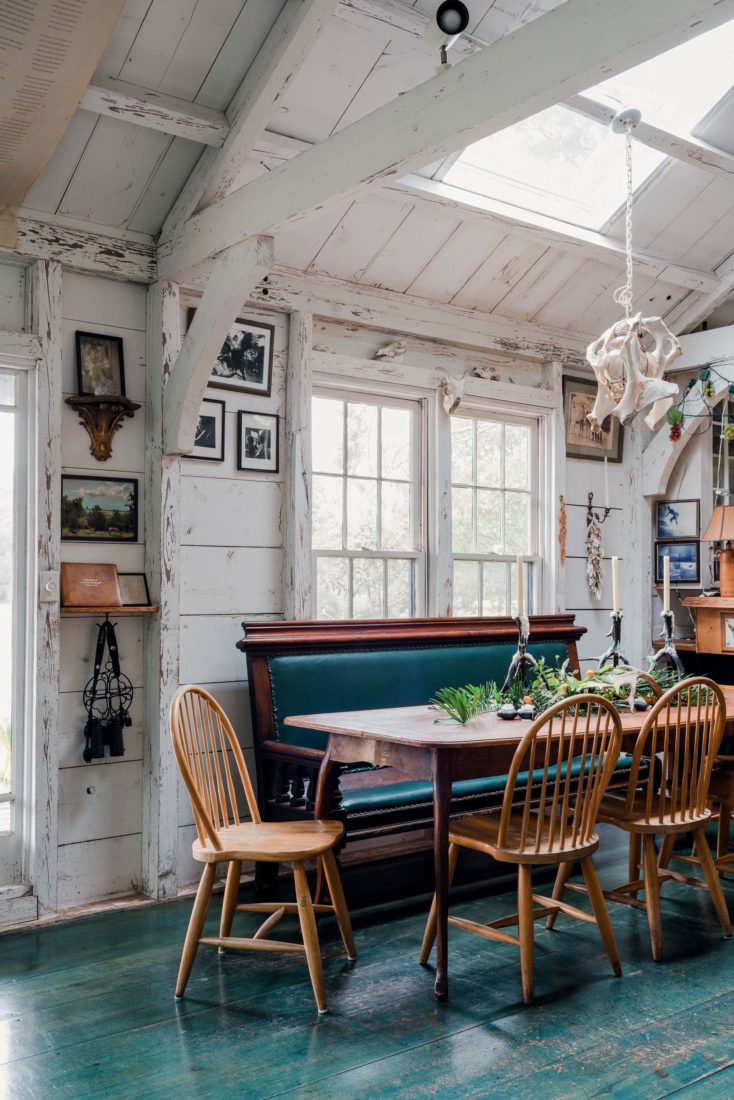
Photo: Ali Harper
A horse-pelvis chandelier hangs over the dining table.
Besides the land collectively owned by Carnegie offspring—in the late 1800s and early 1900s, Cumberland Island was the steel-titan family’s private playground—the National Park Service manages much of Cumberland, which it lists as a national seashore. The only place to book a bed is the Greyfield Inn, to which Ferguson returned in the late 1980s after art school in Massachusetts, a move to Atlanta, and a painful divorce. “I had my baby, Hannah, in one arm,” she recalls, “and my clothes in another, and I came back to Cumberland and said, ‘This is where I want to live. I’ve just got to figure out a way to make a living.’” She did everything from washing dishes to giving tours at Greyfield, and then began stringing the bones she discovered on walks into necklaces and bracelets. She drew on her memories of collecting natural treasures here as a child, when her outdoors-loving and conservation-minded grandmother Lucy Ferguson encouraged her adventurous nature.

Photo: Ali Harper
The salvaged-wood coffee table in the living room. displays fossils.
One day, a guest at the inn landed in a private plane. Ferguson was wearing overalls and pigtails when Sayre, a tall, lean pilot with thick hair, strolled into the kitchen. The next day, when a crew went oystering, Sayre sat behind Ferguson as she tore down the beach in her open Jeep. “My hair was just a mess, flying everywhere, and I couldn’t see much while driving,” she says. “All of a sudden I felt these hands go like this and just hold my hair back.”

Photo: Ali Harper
A horse Sayre carved from fallen cedar after Hurricane Matthew.
Sayre smiles. “That was one of my better moves in my lifetime,” he says. He flew back again and again to the island, and to Ferguson, and to their soon shared dream of building a home on family land. Sayre sketched a design based on a stable Ferguson had admired as a child, and then he built a model out of foam board so they could move around the pieces together. “I loved the idea of having bedroom wings,” she says, “and then one common area where everyone could congregate.”
Ferguson showed Sayre all her hunting spots—the beach road where she gathered shark teeth; the ruins of an English fort, where she unearthed pottery; the sand dunes where she found an entire horse skeleton, which Sayre wired into a hanging horse mobile; the collapsing Carnegie family carriage house, where Sayre salvaged lumber to craft into a display chest for fossils; her beloved grandmother’s barn, where they uncovered dusty tiles to lay in their new kitchen. They bought windows at Florida junkyards and hired a barge to haul tin for the roof.
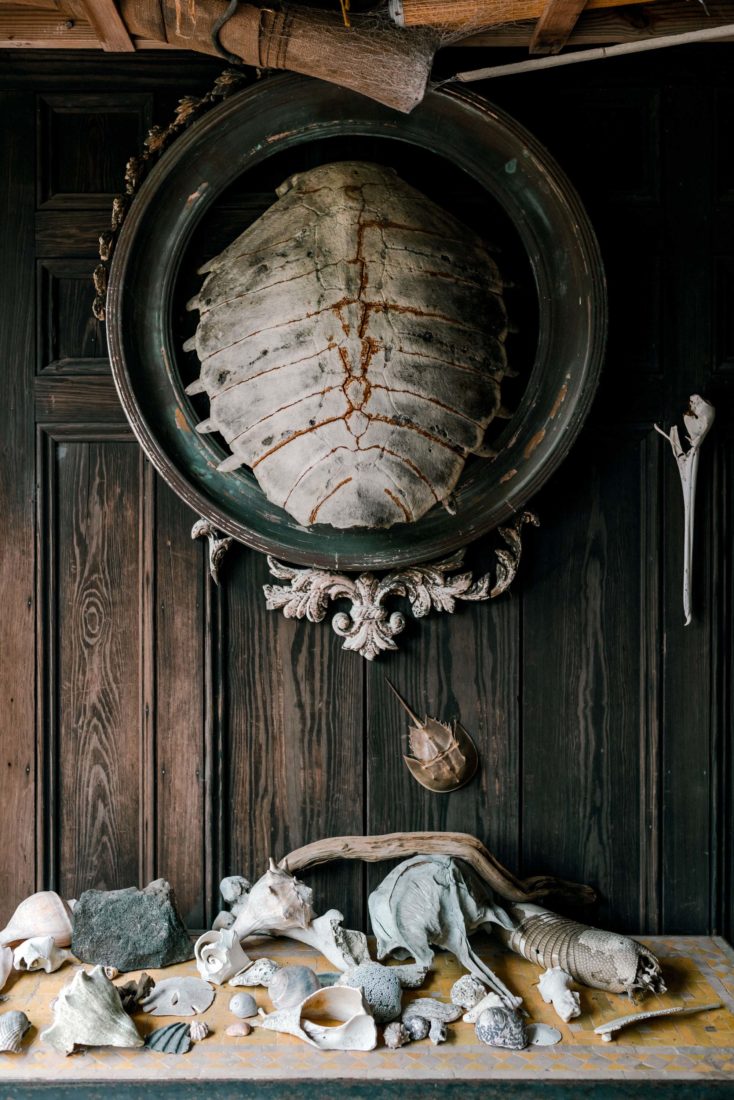
Photo: Ali Harper
A turtle shell Ferguson inherited from her grandmother.
As Sayre finished constructing the fireplace, Ferguson lugged in a weathered beam that had washed ashore—the mantel. Sayre put it in place, and just above it, the two cemented a brick pulled from a pile of rubble in the woods. White lettering on the brick reads, “S & F,” the name of a company up north from which the Carnegies had purchased building materials, and also the initials of the new couple’s last names. “A week before our wedding, we had friends and guests finishing the floors,” Ferguson says. She and Sayre stained the wood blue green like the ocean, and got married on the beach.
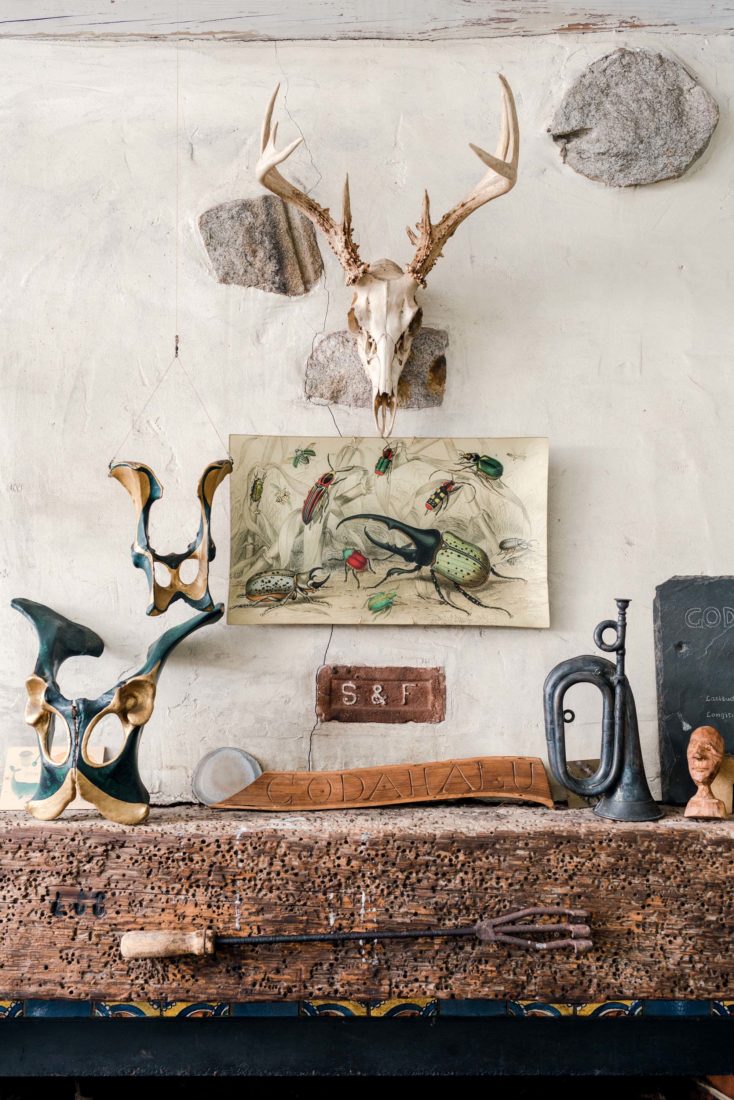
Photo: Ali Harper
The brick above the mantel bearing the couple’s initials.
The after-party raged for days, and it hasn’t entirely stopped since. Musicians come to play on their back porch, and Wes Anderson once scouted Cumberland as a potential movie location (the filmmaker thanked the couple in the credits of Moonrise Kingdom). In 1996, Ferguson and Sayre planned John F. Kennedy Jr.’s hush-hush wedding to Carolyn Bessette here, and the famous newlyweds slept in a bedroom where an orange tree brushes against a window.
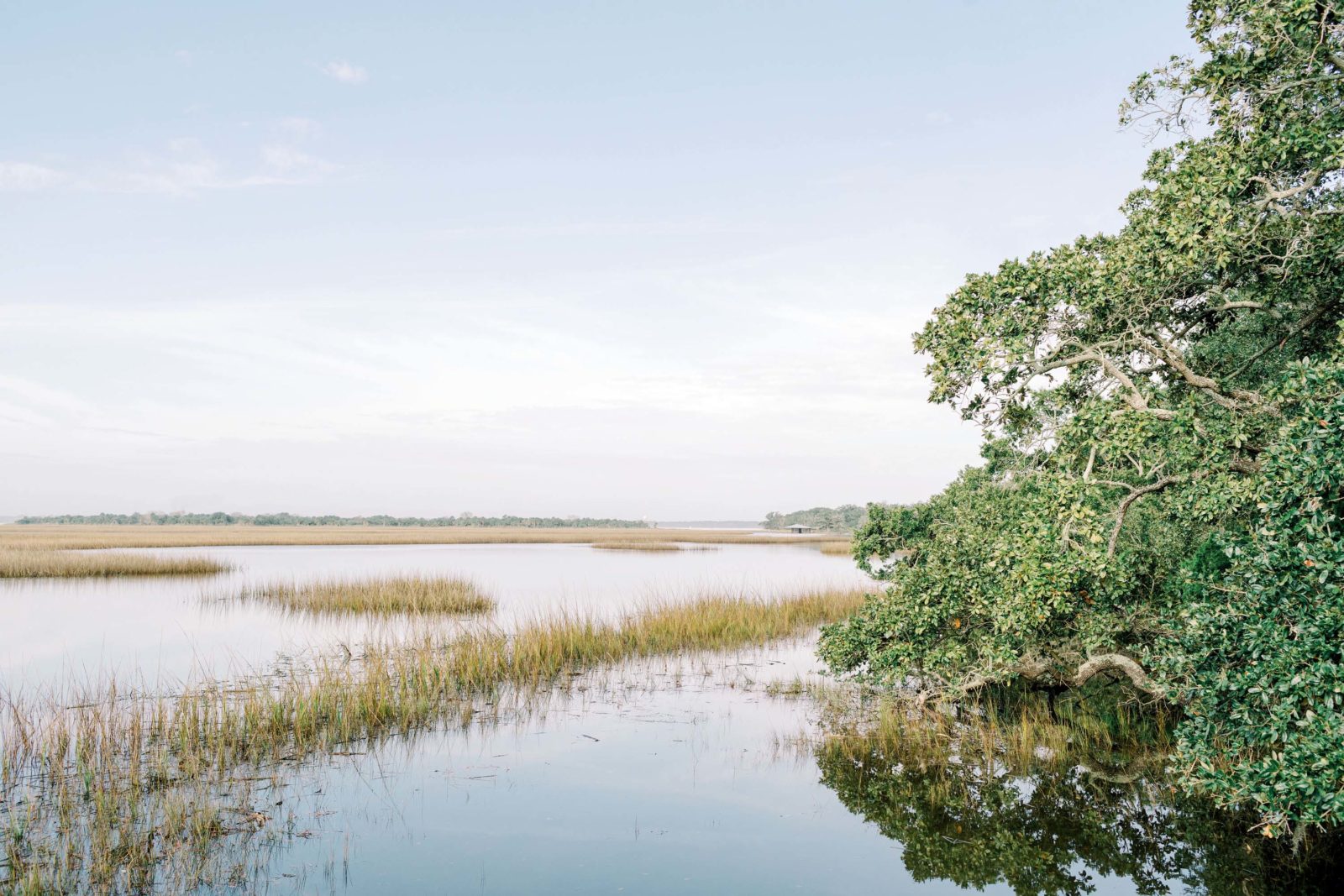
Photo: Ali Harper
A Cumberland Island vista.
On the side of the home closer to the path to the inn, Ferguson runs her jewelry shop. Most days, she works in the studio Sayre built for her above it. “When it’s raining, it’s like a bird’s nest up here,” she says.
In the afternoons, she ambles over the island, hunting for inspiration. If friends are coming over, she and Sayre pull on boots and gather oysters from the shore. Wes Anderson recalls doing just that, then roasting them in the shells “over a brick fire and putting on kitchen mitts to crack them open,” he says. “Their house is the perfect place to appreciate everything this unique island has to offer, but it is the alligators and the armadillos and the wild horses on the beach and Gogo herself, and Dave too, that I remember best.”
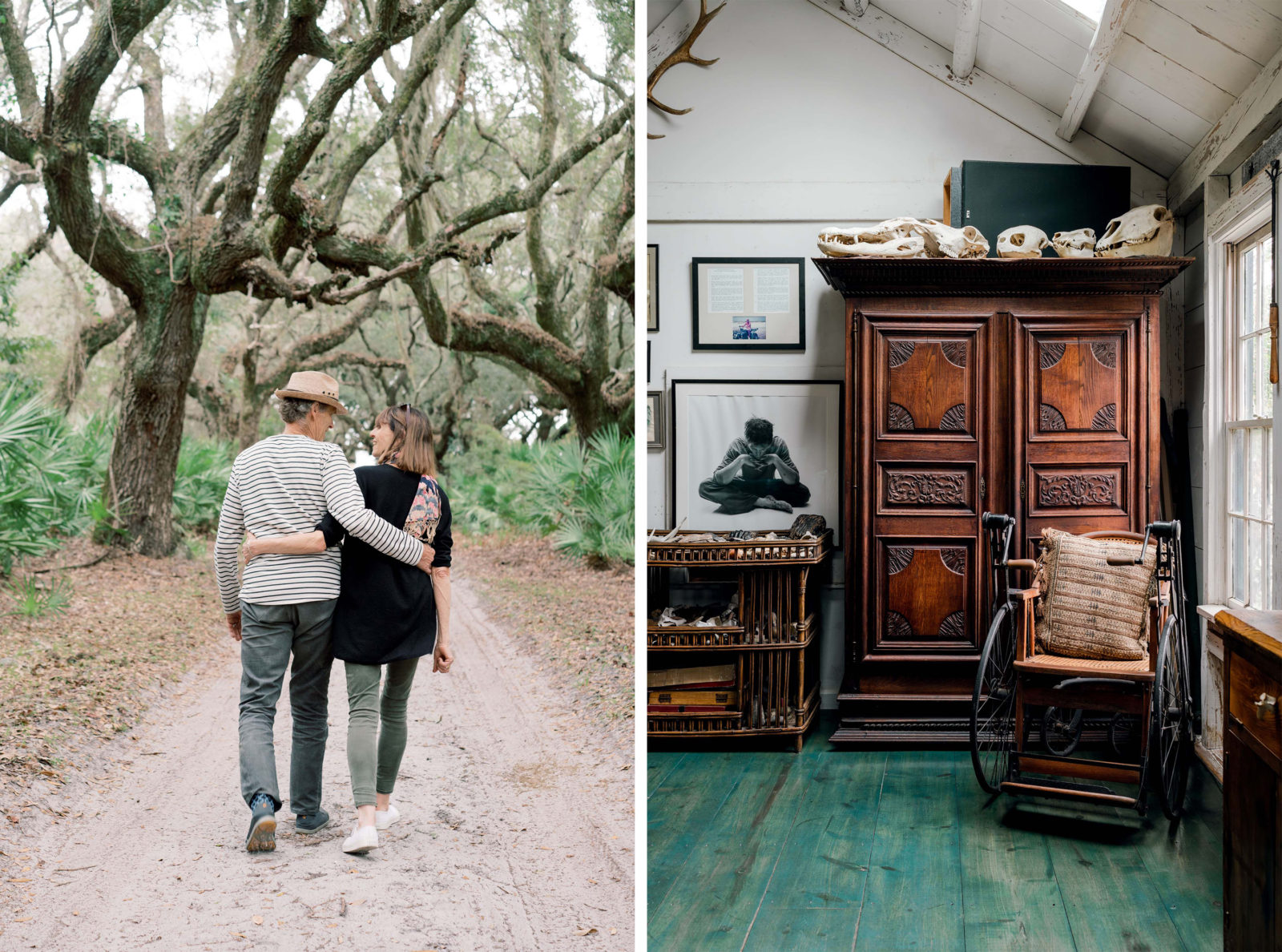
Photo: Ali Harper
A stroll to the beach; wheelchair that once belonged to George Lauder Carnegie.




